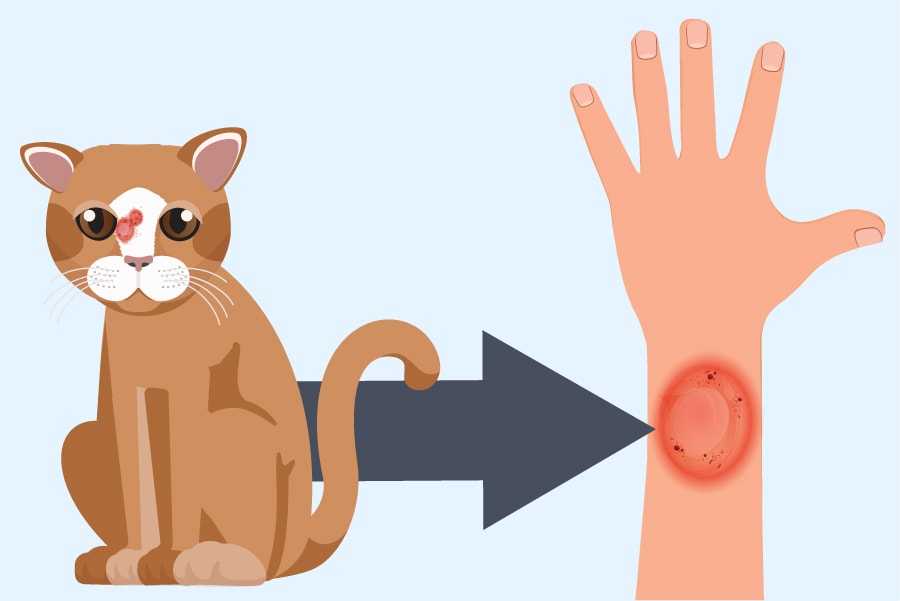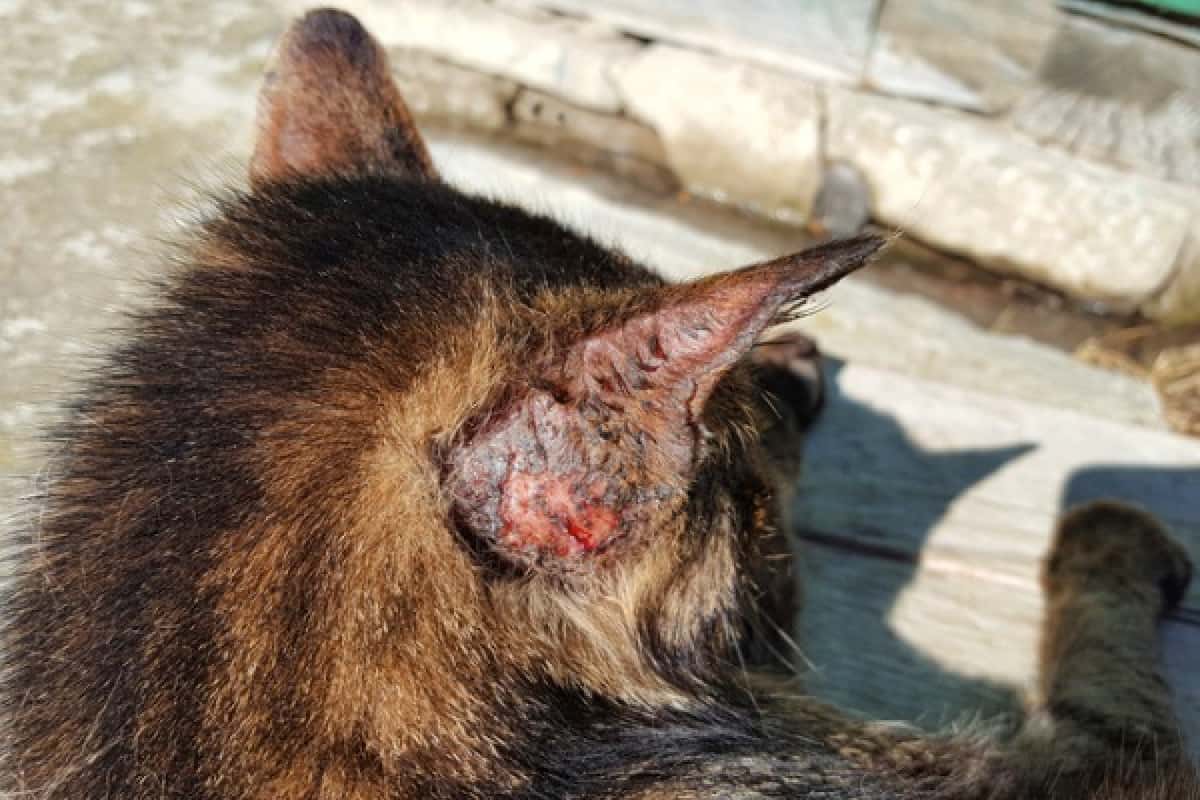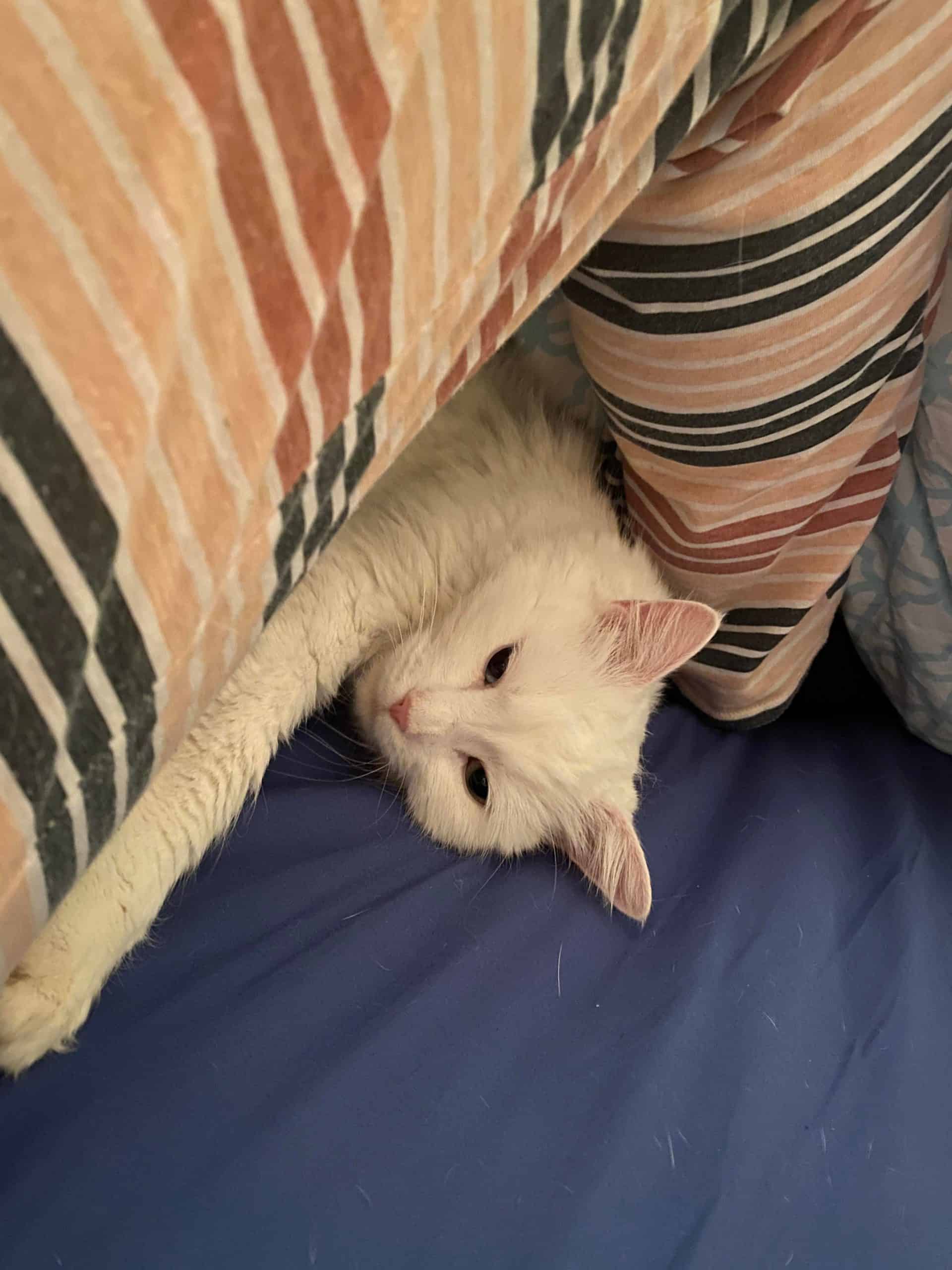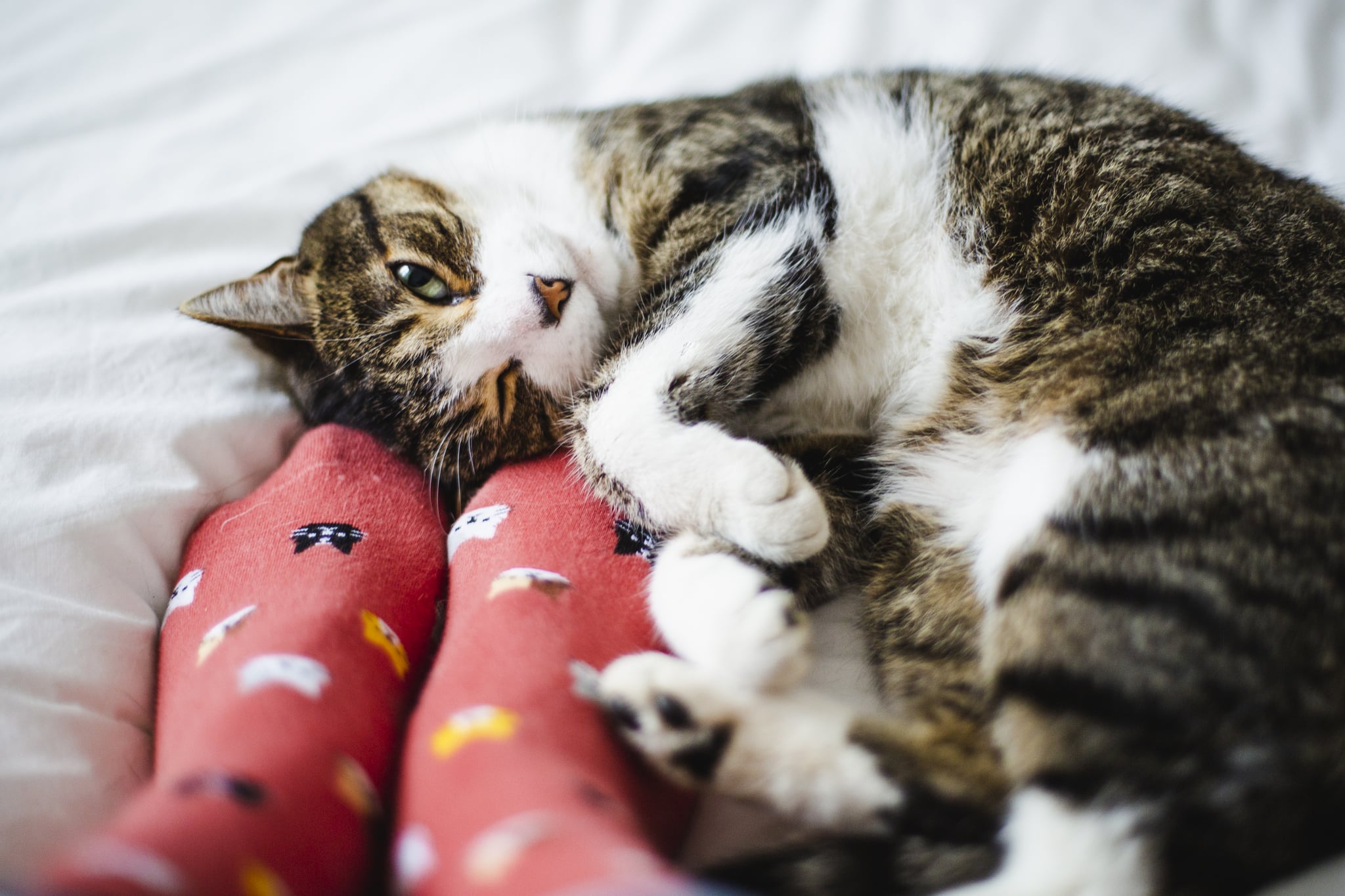Yes, cats can get yeast infections. Yeast infections in cats are caused by an overgrowth of yeast in the digestive system or on the skin.
Symptoms of yeast infections in cats may include itching, redness, and discharge. Yeast infections can be treated with antifungal medications, but it’s important to first get your cat diagnosed by a veterinarian. Maintaining good hygiene and a healthy diet can also help prevent yeast infections in cats. As a cat owner, it’s important to know that yeast infections can affect your feline friend. Yeast infections in cats can occur in their digestive systems or on their skin, and can cause significant discomfort. In this article, we’ll explore the causes, symptoms, and treatment options for yeast infections in cats, as well as some prevention tips to keep your cat healthy and happy. Whether you’ve just adopted a new cat or you’re a seasoned cat parent, understanding yeast infections and how to prevent them is an important part of caring for your furry companion.

Credit: www.cdc.gov
Understanding Yeast Infections In Cats
Yeast infections can affect cats just like humans. These infections occur when a type of fungus called candida overgrows in the cat’s body. The candida fungus is commonly found in the cat’s skin and digestive system, but it usually does not cause any harm because other bacteria present in the body keep it under control.
However, there are certain conditions that can cause the candida fungus to grow uncontrollably, leading to a yeast infection. These conditions include a weakened immune system, allergies, stress, poor diet, and underlying medical conditions. To prevent and treat yeast infections in cats, it is important to maintain a healthy lifestyle for them, including a balanced diet, enough exercise, and regular vet check-ups.
A strong immune system can keep the growth of the candida fungus under control, leading to a healthier and happier cat.
Signs And Symptoms Of A Yeast Infection In Cats
Yeast infections in cats are a common problem that many owners may overlook. One of the tell-tale signs of yeast infections in cats is a foul or musty odor. Another symptom is excessive scratching and licking of the affected area.
Redness and inflammation in the affected parts of the body is another sign. Cats with ear discharge and infection, or those that scratch their face and shake their head may also have a yeast infection. Identifying and treating yeast infections in cats is crucial to their health and wellbeing.
If you notice any of these symptoms in your cat, consult your veterinarian at once. Proper care and treatment can cure the infection and prevent it from recurring.
Fungal Yeast Infection in Cats | Wag!
Diagnosis And Treatment Of Yeast Infections In Cats
Cats may suffer from yeast infections, but it can be tough to diagnose. A veterinary examination, microscopic examination of swabs and biopsy samples or fungal culture tests are some of the diagnostic tests used. Treatment can involve antifungal drugs, medicated baths, and dietary changes.
Oral or topical medication can also be used. Alternative treatment options can also be useful, including probiotics and garlic supplementation. Yeast infections can lead to a range of unwanted symptoms in cats, including rashes, itching, and hair loss. To ensure the quickest and most effective treatment, it is essential to spot the early signs of yeast infections and seek professional advice from a veterinarian.
Preventing Yeast Infections In Cats
Maintaining good kitty hygiene and regular grooming (brushing and bathing) may lower a cat’s chance of developing a yeast infection. Similarly, reducing stress levels with regular play and exercise could also help prevent these infections. Additionally, incorporating immune-boosting foods and supplements, such as probiotics, can benefit the feline body’s internal system.
Finally, some holistic treatments are available, such as coconut oil application or apple cider vinegar rinses. However, if you notice any unusual symptoms, like excessive licking or redness, a vet visit is always best to address any underlying health issue.
Frequently Asked Questions About Yeast Infections In Cats
Cats can develop yeast infections, which can lead to various health problems. It’s not only an itchy problem, but it can also cause digestive issues, skin inflammation, and ear infections. Yeast infections are not contagious, but they can recur if left untreated.
To prevent yeast overgrowth in cats, it’s essential to feed them a balanced diet, keep them clean, and manage their stress levels. Some cat breeds are genetically predisposed to yeast infections, including the persian and siamese cats. Natural remedies like coconut oil, aloe vera, and apple cider vinegar can help soothe and alleviate symptoms of yeast infections, but it’s always best to seek veterinary advice.
Regular vet checkups and a healthy lifestyle can help prevent yeast infections in your feline friend.
Frequently Asked Questions On Do Cats Get Yeast Infections
Can Cats Get Yeast Infections From Food?
Cats can develop yeast infections from food allergies, leading to itchy skin, ear inflammation, gastrointestinal upset, and frequent licking. Sensitivities to common allergens like chicken, beef, wheat, and dairy can be responsible for causing these infections.
How Can You Tell If Your Cat Has A Yeast Infection?
Yeast infections in cats can be identified through specific symptoms such as itchy skin, ear infection, hair loss, inflamed skin, and gastrointestinal issues. Regular visits to the vet can help identify the condition, and a proper diagnosis can lead to timely treatment.
Are There Any Home Remedies For A Cat’S Yeast Infection?
Raw coconut oil and apple cider vinegar have anti-fungal properties that can relieve the symptoms of yeast infection in cats. However, it’s best to seek professional veterinary advice before trying any home remedies as self-treatment can worsen the condition.
How Can You Prevent Yeast Infections In Cats?
Maintaining proper hygiene, a balanced diet, clean litter boxes, and regular vet check-ups can prevent yeast infections in cats. Keep your cat’s ears clean and dry and regularly brush their coat to keep the skin healthy. Additionally, avoid exposing your cat to allergens that can trigger the disease.
Conclusion
Ultimately, it is possible for cats to get yeast infections, although they are not as common as in other animals. It is important for pet owners to be aware of the signs and symptoms of a yeast infection in their feline friends, especially if they have a compromised immune system or are on antibiotics.
Treatment for a yeast infection in cats usually involves a combination of antifungal medication and adjustments to the cat’s diet and hygiene routine. As with any health concern, prevention is key. Maintaining a clean environment for your cat, minimizing their stress and giving them a healthy diet can help reduce the chances of a yeast infection.
If you suspect your cat may have a yeast infection, it’s always best to consult with your veterinarian, who can provide the necessary diagnosis/treatment to keep your feline friend happy and healthy.
{ “@context”: “https://schema.org”, “@type”: “FAQPage”, “mainEntity”: [ { “@type”: “Question”, “name”: “Can cats get yeast infections from food?”, “acceptedAnswer”: { “@type”: “Answer”, “text”: “Cats can develop yeast infections from food allergies, leading to itchy skin, ear inflammation, gastrointestinal upset, and frequent licking. Sensitivities to common allergens like chicken, beef, wheat, and dairy can be responsible for causing these infections.” } } , { “@type”: “Question”, “name”: “How can you tell if your cat has a yeast infection?”, “acceptedAnswer”: { “@type”: “Answer”, “text”: “Yeast infections in cats can be identified through specific symptoms such as itchy skin, ear infection, hair loss, inflamed skin, and gastrointestinal issues. Regular visits to the vet can help identify the condition, and a proper diagnosis can lead to timely treatment.” } } , { “@type”: “Question”, “name”: “Are there any home remedies for a cat’s yeast infection?”, “acceptedAnswer”: { “@type”: “Answer”, “text”: “Raw coconut oil and apple cider vinegar have anti-fungal properties that can relieve the symptoms of yeast infection in cats. However, it’s best to seek professional veterinary advice before trying any home remedies as self-treatment can worsen the condition.” } } , { “@type”: “Question”, “name”: “How can you prevent yeast infections in cats?”, “acceptedAnswer”: { “@type”: “Answer”, “text”: “Maintaining proper hygiene, a balanced diet, clean litter boxes, and regular vet check-ups can prevent yeast infections in cats. Keep your cat’s ears clean and dry and regularly brush their coat to keep the skin healthy. Additionally, avoid exposing your cat to allergens that can trigger the disease.” } } ] }



